how to paint a piano with chalk paint
Dear cousin,
You know who you are. Someone could have stopped me from talking, but noooooo. When asked if I had used chalk paint, I said yes, that I had a chalkboard painted wall at home. I apparently didn’t know what I was talking about. It was the perfect example of Minnesota nice, you just pretended that what I said was half right? Ha! You also seem to have a gift that I did not inherit: your face does not give away what you are thinking. While I knew something was off in the room, I did not know why until later when I googled, “What did my cousin mean when she said chalk paint?” Promise me you will cut me off next time, please and thanks.
Love,
Cousin #10 of 18
Let me tell you what I did not know then. Chalk paint is not chalkboard paint!
Chalk paint (Look here at Annie Sloan) is a non-toxic water based paint that can be applied without sanding or stripping of the painted or stained surface. High five for all of you who also love NOT prepping in order to paint. I’m so impatient when it comes to painting furniture. A chocolate cake wrapped in a homemade ganache wrap? Sure, let’s spend hours doing that. But please don’t make painting last longer than it has to. Snip snap.
Chalk paint can also cover almost any material, not just wood. It has a matte/flat/chalk like feel when it is done. Therefore depending on the look you desire and how you will use the furniture, waxing it for protection and shine is usually recommended. In the past, I chose to cover it with a clear polyurethane instead of waxing because I used it on a dining room table that would have potential spills. I wanted a surface that could be wiped down pretty easily. I’m sure the finished product is lovely when waxed, I just haven’t tried that yet. (Please comment if you have!)
My latest victim? This orangey brown stained piano.
A sweet friend gave it to us and physically moved it into my house. I’ve loved having it in our home. But every single time I walked into the only room it fits in, I was distracted by the color. It made me frown and my shoulders slump. I wish I understood my feelings about decor but I’ve just learned to respect them. If it drags me down, something must be done about it when possible. And if there is one thing I have learned from growing up with a Dad who is a professional painter, color is one of the more inexpensive fixes to changing something for the better.
Previously, I had re-painted a dining room table and an end table with white chalk paint. It worked great going over old white paint. However, covering a brown stained piano seemed a bit more risky and for sure had a few more delicate parts to keep in mind.
Here is what I learned:
1. Read the back of the paint can, and follow what it says about stained surfaces. I actually read it but thought it didn’t apply. In hindsight it did and could have saved me some work. It now makes complete sense.
The back of the paint says this:
For most purposes, one coat of paint is enough. However some furniture, generally from the 1930s and ’40s, has a coating which may cause a stain to come through the paint. Don’t worry, just apply clear shellac to the stain, and repaint.
Because I had never painted a stained surface with chalk paint, and I didn’t think the piano was from the 30s and 40s, I didn’t do anything before painting this time. But sure enough, after two coats of chalk paint, yellow streaks were showing through.
This was as easy as the quote noted above. I bought a small can of shellac, rubbed it on with a sponge brush, and it dried within minutes. Then I proceeded to paint it again.
TIP: In the future if I am covering a stained piece, I will prep the furniture with a coat or two of shellac up front. It’s cheap, fast, and easier than painting multiple coats of a paint color.
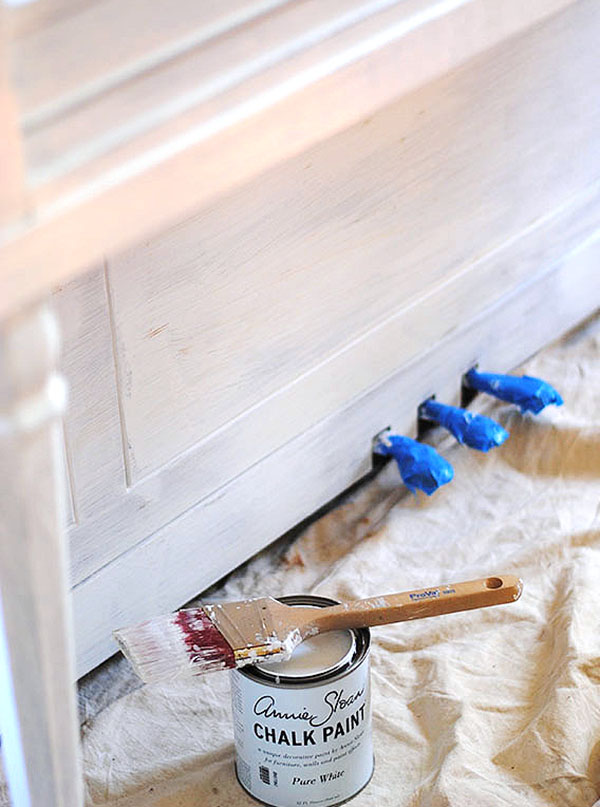
2. In this order, I painted 2 coats of pure white, 1 coat of shellac to seal the stain, a 3rd coat of pure white to recover sealed stains, and ended with 1 to 2 coats of polyurethane (see note below). To cover this piano and the bench, I only used 1-32 oz can of Annie Sloan pure white paint. If I had covered with shellac first, I am sure I would not have done 3 coats of white. It really covers well and dries fast so you can do multiple coats at once.
Here’s one coat of paint without sealing the stain:
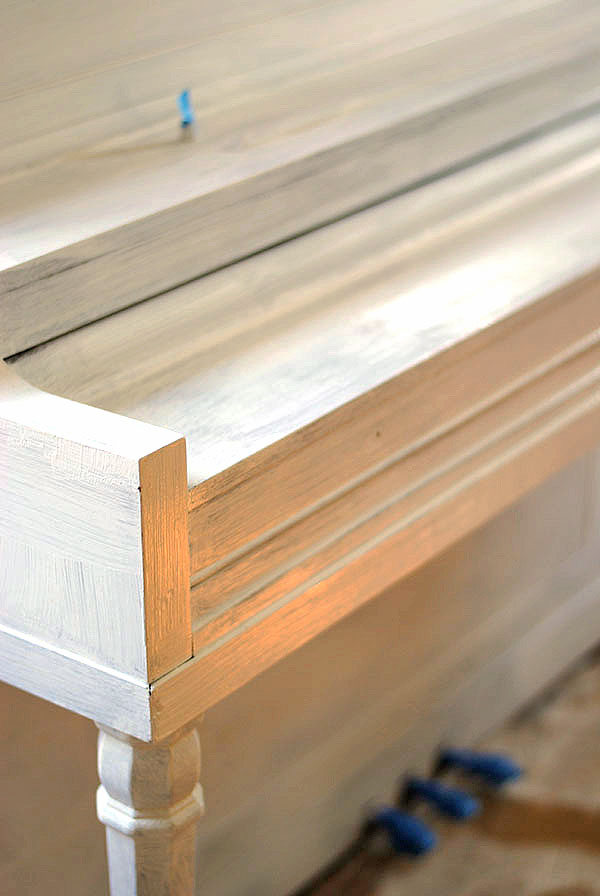
Here I am touching it 30 minutes later, and it’s ready for a 2nd coat.
3. When I was finished with the last coat, I touched up a few additional spots and covered it with a clear polyurethane. I like to use the top of our piano for a bar when we have company. I covered the top with a 2nd coat of poly just to be sure it’s a little bit more protected from any liquid spills. I did not do this all over. Remember, I am impatient. (I didn’t see any visual need.)

4. Chalk paint that is left open thickens a bit. By the time I painted the piano seat, the paint was getting low and thick. It left some bumps from the brush strokes on top. Since this wasn’t the look of the piano, I just took a fine grit sand paper and sanded it smooth, dusted it off, and applied the poly. Easiest paint fix I’ve ever made.
I am not a fussy painter when it comes to furniture because most of the furniture that I am drawn too is dinged up a bit and not perfect to begin with. There are small imperfections in my finish and even the wood in some areas shows a little cracking. Even though I was going for a fairly clean and crisp white look, I left this.
There is also a slight tinge of yellow in places (the creases) from the stain. If I had wanted, I could have filled in cracks and chips with wood filler first or given it another coat of shellac before the last coat of paint. I wanted it to belong in the rest of my imperfect house so I did not fuss with it.
Here’s the comparison:
This project took me less than 4 hours total, but knowing what I know now, I could have had it done in half the time. Let me know if you have any questions. If you have experience with chalk paint, I’d really love to hear your pros and cons.
~Heather
Last Updated on June 15, 2022 by Heather Bursch

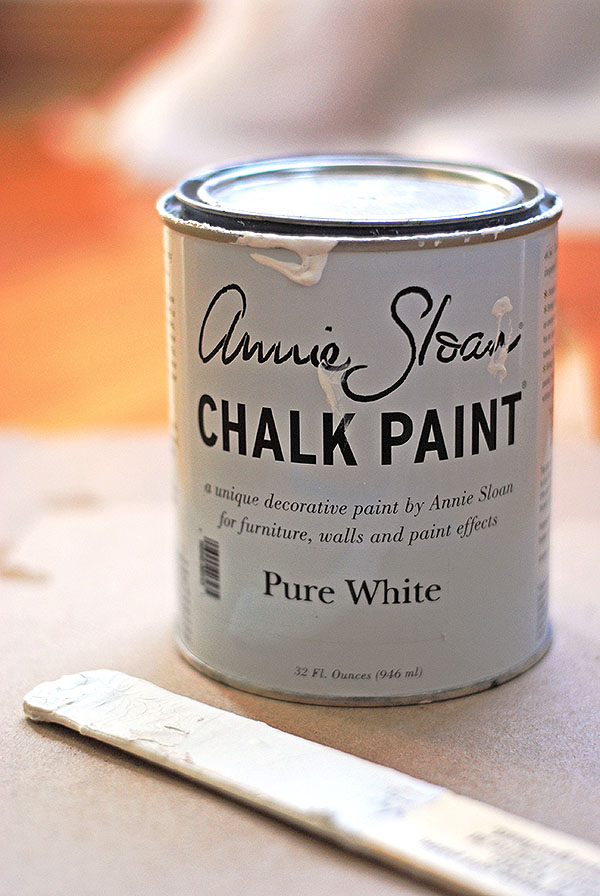
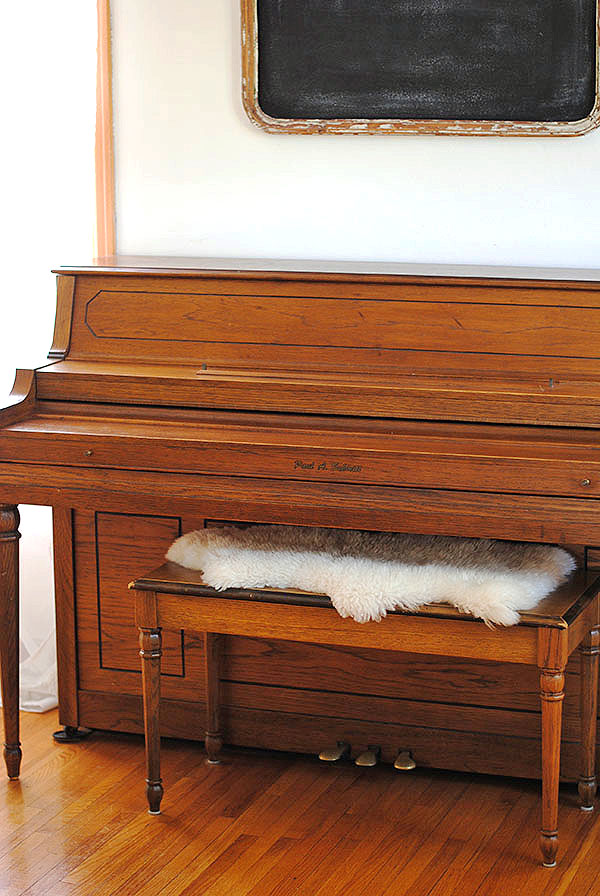

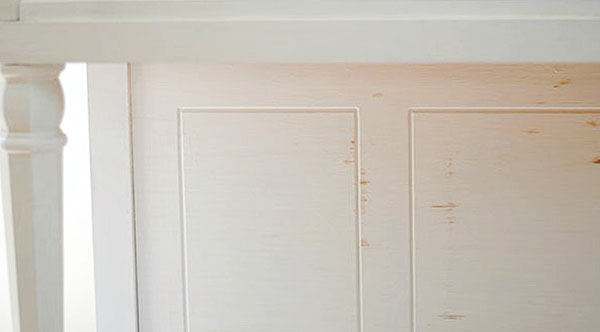
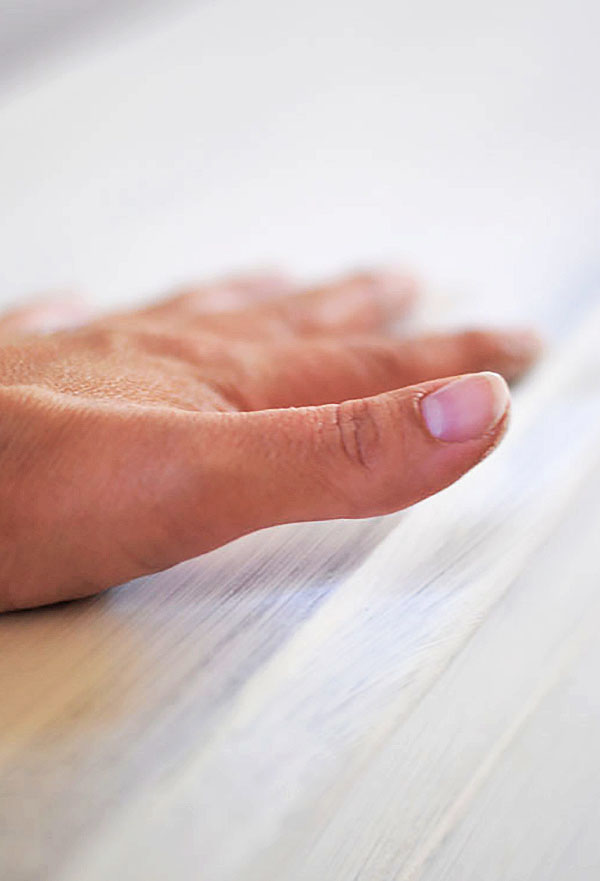
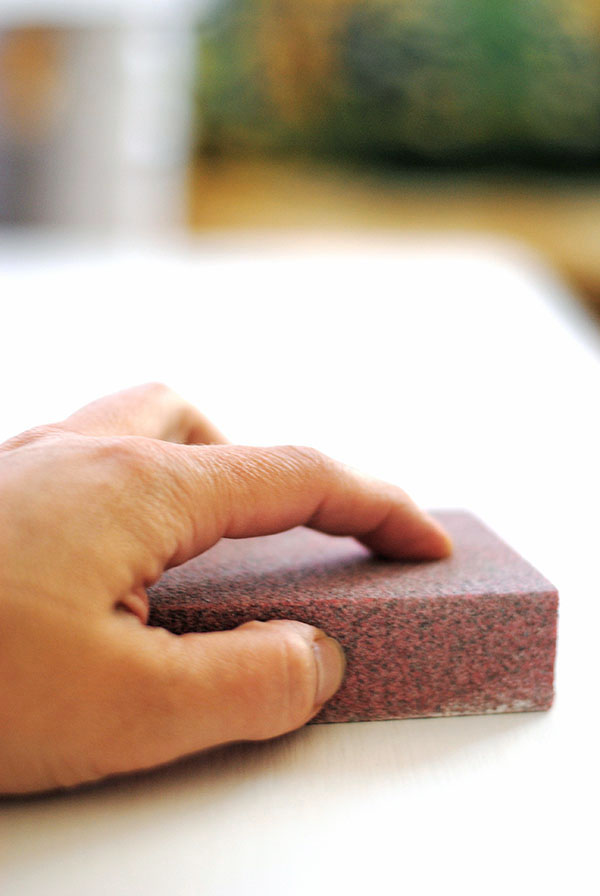
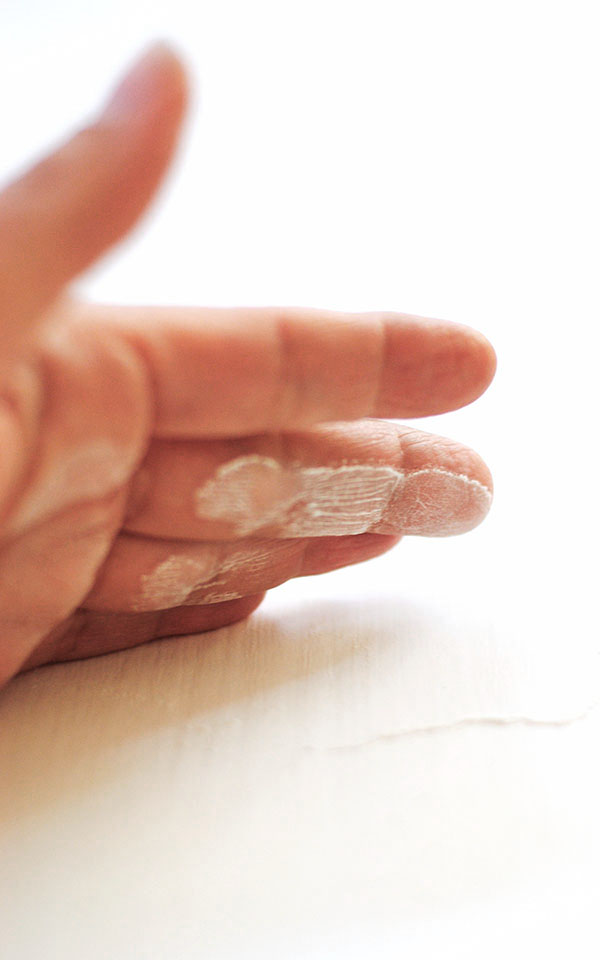

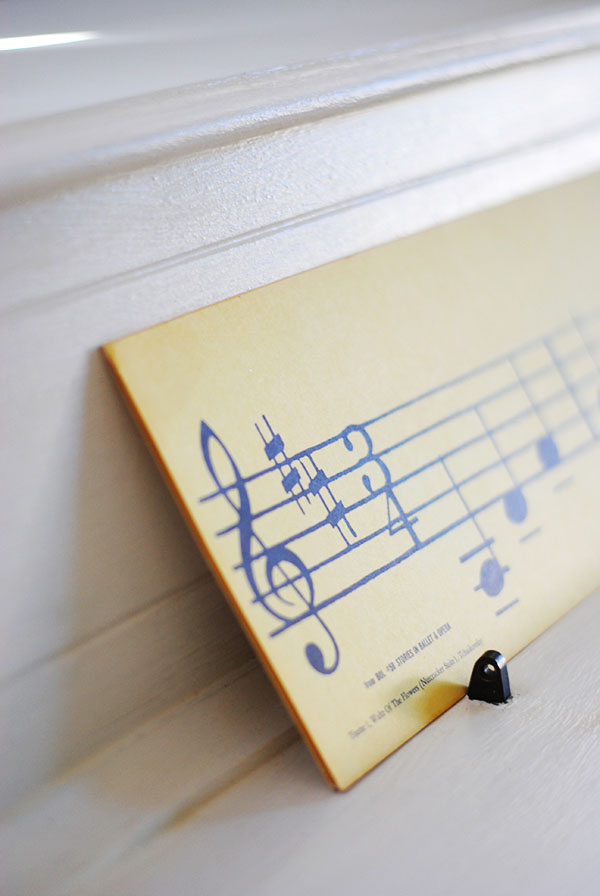


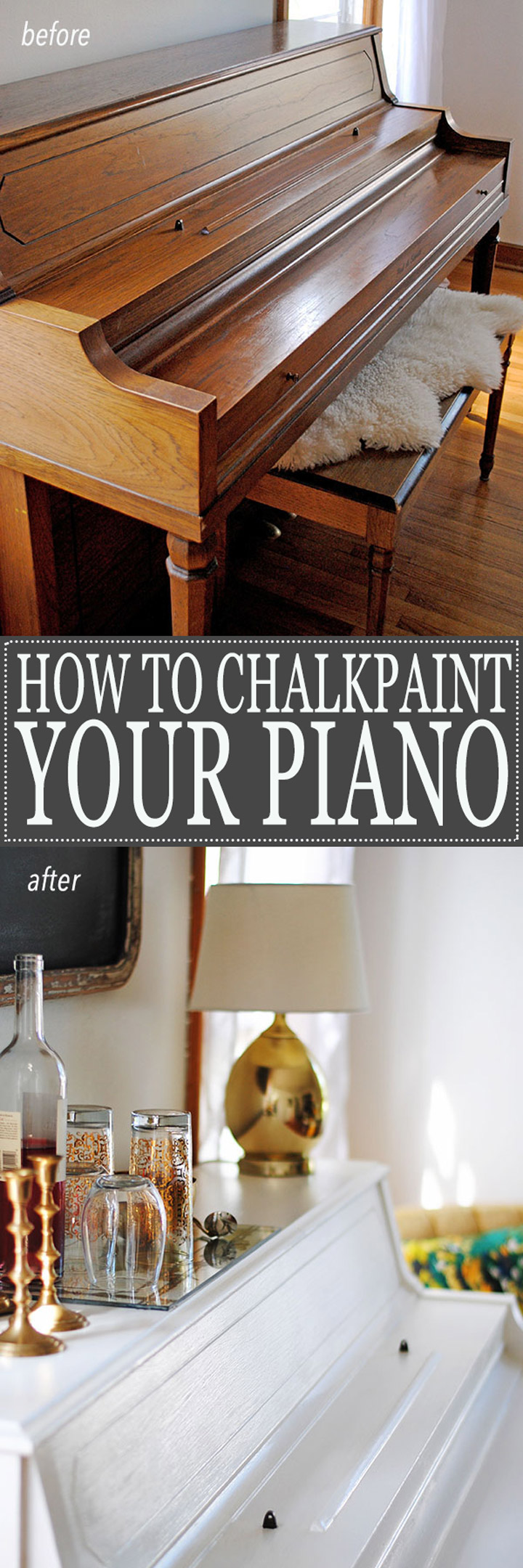
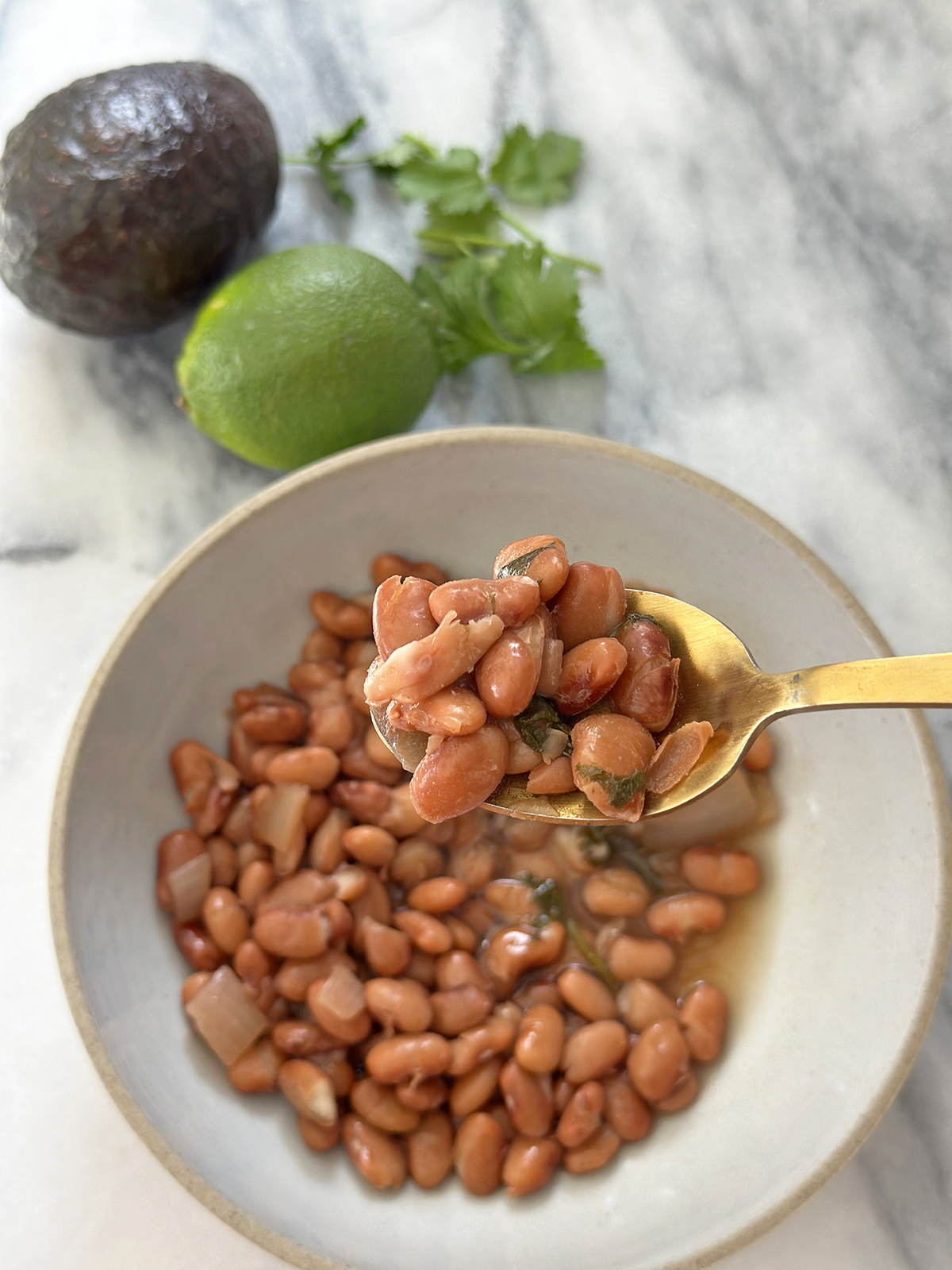
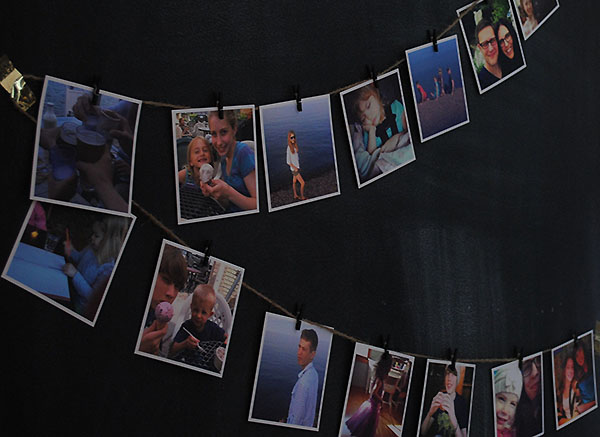
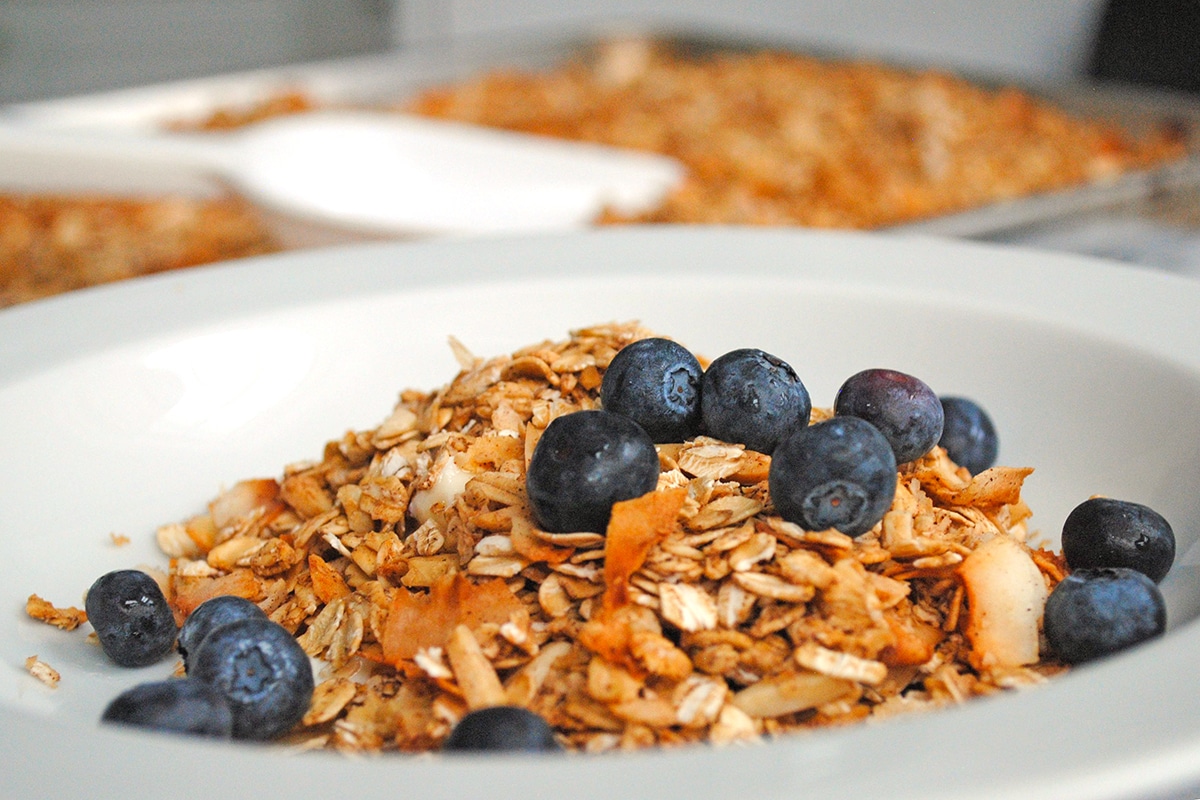
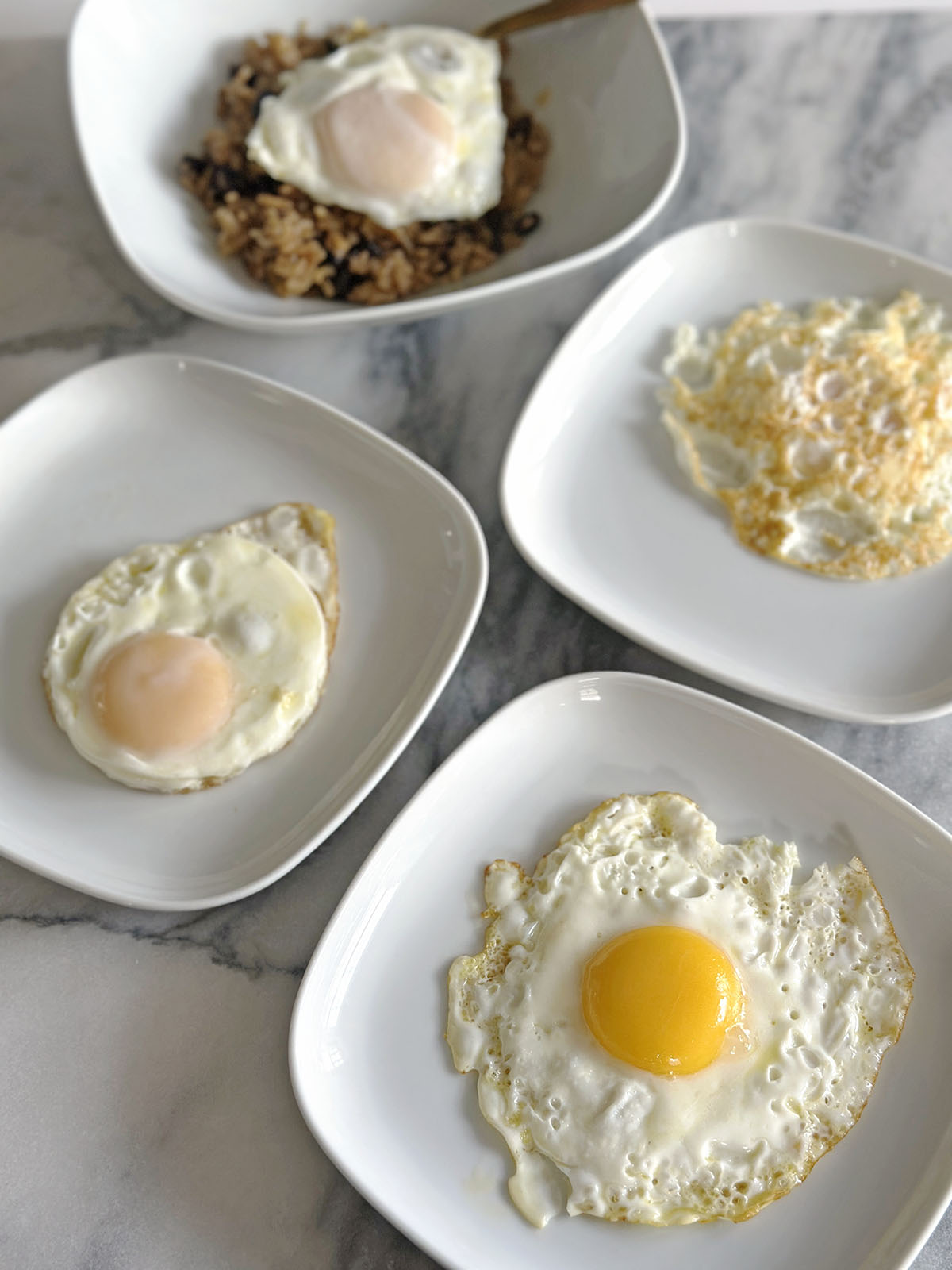
How did I NOT put two and two together when we were texting/talking about this?? Was my mind already made up?? Shellac would have saved me! I had the similar stain show-through on my white wine rack — I ended up using that entire quart can of Sherwin Williams white we bought together.
Next time shellac (and chalk paint) to the rescue.
So. what did you do with the piano name. i cant find anyone that is telling me how to take it off or how to keep it.. thanks
Jane! Sorry it took me so long to respond, somehow I missed your comment. I do not remember scraping or sanding off the name. Can you believe that? It must not have been a decal or I would have. I just probably painted right over it because I did not prep this piano at all!
I recently bought a piano and want to paint it off white. Would you still reccomend using the chalk paint, or would you have used paint other than that for a more perfect look?
Hi Jacqueline,
Now that I’ve used the piano for a few years, I would still use the chalk paint for the main reason that I did not have to prep or strip the stained piano before painting it. I did realize while painting it that if I didn’t first give it a coat of the shellac, as I think I mentioned in my post (and so did the Annie’s paint can) that it did start to bleed through the white. Do that for sure, cover it first to seal in the stain, then use the chalk paint. I like how it looks now and while it cracked slightly due to old wood parts, I like that it isn’t perfect. Plus I know at any point if I want to touch it up, I could just add another coat of paint and end with a quick coat of poly. Still looks great and the poly makes it easy to wipe down if needed!
This is great inspiration! You have a piano similar to mine….from the 60s and not the most attractive piece of furniture! It gets uglier by the day! It seems like a relatively easy project for such an intimidating piece of furniture! Thank you for the information!
Sure! I hope it goes well, let me know!
I have a black slick piano (Sojin). Do you think I could chalkpaint it? If so, what prep would I need to do? Help!
Hi Jill! I do think you could use chalk paint, it’s crazy how it adheres to all surfaces. I do not think you would need to do any prep since it is not stained but wipe it clean and make sure it’s dry before you begin. That being said, I have never covered this exact surface and just to be sure you like the way it does cover, you might see if there is any spot you can test. I’d look over Annie Sloan’s website for any other tips as well but it truly is a no-prep paint in my experience.
We are painting our piano navy blue. It’s a large upright piano and we are trying to figure out how much Annie Sloan paint we need. Any tips?
Hi Tia! If I remember correctly, I only needed one 32-oz can to cover my piano, and I ended up doing three coats because I of the stain bleeding through the white. With using navy blue (good choice!) I would get just one can. I think you will be so surprised at how well it goes on. Good luck!